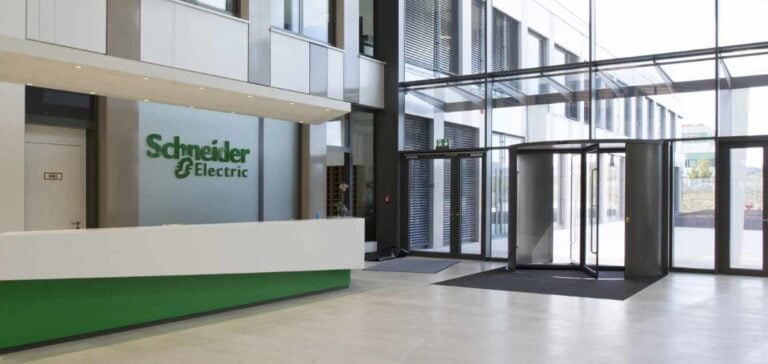Schneider Electric, a French giant in electrical equipment and industrial automation, announced record financial results for the third quarter of 2024, with revenue reaching 9.3 billion euros, up 5.9% year-over-year. This success is largely attributed to the high demand for products and services supporting energy transition and digitalization, two key growth areas within the company’s strategy.
Peter Herweck, CEO of Schneider Electric, commented on the performance, emphasizing the pivotal role of current major trends, such as artificial intelligence and energy management. The Systems division, which encompasses complex automation and energy management solutions, particularly benefited from this momentum. A well-filled order book offers, according to Herweck, reassuring visibility for the coming quarters, while demand is expected to continue increasing in the Products division.
Expansion of energy management
Energy management, a strategic segment of Schneider Electric, recorded organic growth of 11.6%, generating 7.65 billion euros in the third quarter. The success of this segment is driven by the demand for equipment and software that enable companies to reduce their energy consumption, a field in which Schneider Electric is a market leader.
Conversely, the industrial automation activity is facing some challenges, particularly in Western Europe, where industrial demand remains subdued. This segment thus recorded a 5.9% organic decline. Although this market is encountering short-term difficulties, Schneider Electric maintains its investment and innovation strategy in this sector, anticipating a demand rebound.
Geographic performance: North America leads
Schneider Electric’s results reveal a varied regional dynamic. In North America, which accounts for 38% of the group’s revenue, organic growth accelerated to 15.1%, driven by massive investments in energy infrastructure. This region remains a growth engine for Schneider, supported by public policies favoring energy efficiency.
In Western Europe, revenue remained stable with a slight increase of 0.3%. The Asia-Pacific region posted moderate growth of 2.0%, while the so-called “rest of the world” region, which includes the Middle East, Africa, and South America, recorded a 16.8% increase in the third quarter. This diversity of regional performance reflects Schneider Electric’s flexibility in adapting its offerings to meet specific market needs.
Outlook for the end of the year
Schneider Electric maintains its growth forecasts for 2024. The group expects a revenue increase at constant scope between 6% and 8%, with an adjusted EBITA margin improvement of 60 to 80 basis points, bringing this margin to between 18.1% and 18.3% of revenue. These projections highlight Schneider’s commitment to sustaining solid profitability while continuing to invest in innovation and energy optimization solutions.
Schneider Electric’s management expresses cautious optimism for the upcoming quarters, supported by increased visibility on demand and a diversified portfolio. Leveraging its strategy centered on energy and digitalization, the company aims to strengthen its role in the global energy transition while addressing industrial competitiveness challenges.






















